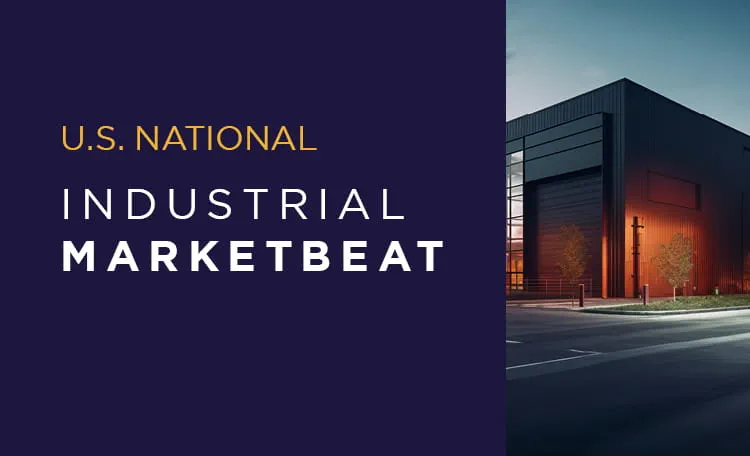Navigating the Future of Logistics and Site Selection
Mitigating Risk Through Market Intelligence
The world of logistics and site selection is in a state of rapid transformation. Global forces like tariffs, labor shortages, sustainability demands, and technological advances are rewriting the rules, making it harder than ever for businesses to plan effectively. Yet, with great challenges come great opportunities. At Cushman & Wakefield, we’ve observed how these shifts are reshaping global supply chains and critical decisions. One thing is certain: Adopting a data-driven approach is essential. By harnessing analytics and insights, companies can transform uncertainty into a competitive advantage and create strategies that drive long-term success.
Tariffs and Their Global Ripple Effect
The volatility of global trade, especially driven by tariffs, is one of the most significant challenges facing businesses today. Tariffs often force companies to reevaluate their supply chain strategies and adjust operations to minimize disruptions. For some, this has meant moving manufacturing closer to domestic markets to reduce risks tied to fluctuating trade policies and escalating costs.
For example, several U.S.-based manufacturers have shifted operations back to domestic locations, focusing on operational strategies that address supply chain challenges, labor availability, regulatory compliance and financial stability. Metrics in Europe show a 45% decline in U.S. shipping bookings as the effects of American tariffs ripple outward, while ports such as Rotterdam and Antwerp report slight increases in import volumes due to rerouted freight traffic.
This reshuffling of supply chains has also led many manufacturers and logistics providers to explore diversified routes and new entry points to hedge against trade uncertainties. Data-driven tools allow businesses to evaluate factors like supply chain risks, operational costs and market opportunities. With these insights, businesses can identify resilient locations that minimize risks and ensure long-term sustainability.
Addressing Labor Market Challenges
Labor shortages are another growing concern in the site selection process. Across industries, businesses are grappling with workforce gaps as demographic shifts, evolving skill requirements and competition for talent intensify. These shortages demand a deeper understanding of labor markets to make smarter, more sustainable decisions.For example, according to Deloitte, the U.S. alone will see 1.38 million new industrial job openings by 2023, but nearly half are expected to remain unfilled due to technical skill gaps and limited labor pools. Comprehensive labor market analysis—including assessments of talent availability, wage trends, and regional competition—is key to navigating this dynamic effectively.
Technology is increasingly important in addressing labor shortages. Markets like Japan and South Korea are setting benchmarks with automation initiatives, particularly in warehousing and logistics, showcasing how balanced adoption of robotics can enhance productivity while addressing labor shortages. Early deployment of automation tools can help companies alleviate workforce challenges without compromising efficiency. However, achieving the right balance between automation and human capital remains essential for sustainable success.
The Rising Importance of Sustainability
Sustainability has transitioned from a corporate buzzword to a crucial element of site selection strategies. Businesses are prioritizing solutions that align with environmental goals, such as reducing emissions, integrating renewable energy and employing green building practices.Legislation is also driving this change. For instance, European countries have implemented regulations restricting the leasing of energy-inefficient buildings, propelling demand for modern, energy-efficient spaces. Similarly, U.S. companies are setting ambitious sustainability targets, including net-zero carbon goals for warehouse operations by 2030.
When sustainability is integrated early in the site selection process, businesses can align environmental considerations with operational objectives. By using modeling tools to assess energy needs, utility costs, and carbon footprints, companies can not only meet sustainability benchmarks but also ensure operational savings in the long run.
Innovation in Logistics
Technological innovation has revolutionized the way companies approach logistics and site selection. Advanced modeling tools provide businesses with the ability to analyze key factors like real estate availability, utilities, supply chain stability, and labor trends in cohesive, actionable ways.For example, location strategy tools now enable businesses to layer critical location factors such as supply chain metrics, labor suitability, infrastructure access and real estate availability to find the optimal market or site that meets a client’s operational and business needs. Emerging technologies such as AI, autonomous vehicles and robotics are pushing the boundaries of what’s possible in logistics. These advancements are improving distribution efficiency, minimizing operational risks and opening new markets that were previously seen as less viable. Investing in these capabilities allows companies to adapt to market demands quickly and maintain their competitive edge.
Final Thoughts
The logistics and site selection landscape has never been more dynamic. Businesses can no longer rely solely on past strategies to inform future decisions. Whether navigating the complexities of tariffs, addressing labor shortages, meeting sustainability goals, or leveraging emerging innovations, success lies in an integrated and agile approach underpinned by robust data analysis.At Cushman & Wakefield, we are committed to helping businesses make informed decisions that drive long-term success. By combining powerful analytics with deep market insights, we help businesses identify opportunities, mitigate risks and shape the future of their operations. Agility, innovation, and data-driven precision will shape the next era of logistics and site selection. If you’re ready to take the next step, we’re here to guide you forward.

